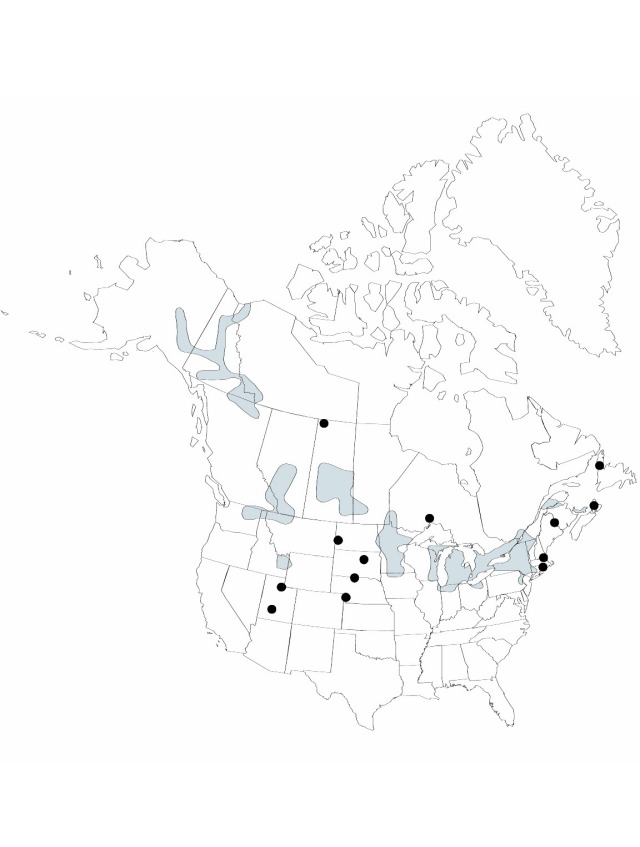Potamogeton friesii
Hist. Stirp. Fl. Petrop. 43. 1845.
Rhizomes absent. Cauline stems compressed, without spots, 10–135 cm; glands green, greenish brown, or gold, to 0.7 mm diam. Turions terminal or lateral, common, 1.5–5 cm × 1.5–4 mm, soft; leaves ± 4-ranked; outer leaves 2–3 per side, base corrugate, apex apiculate to acute; inner leaves reduced, arranged into fan-shaped structure and oriented at 90° angles to outer leaves. Leaves submersed, ± spirally arranged, delicate to rigid, sessile; stipules not persistent, inconspicuous, convolute, free from blade, white, not ligulate, 0.55–2.1 cm, fibrous, coarse, shredding at tip, apex obtuse; blade light green, rarely olive-green to.somewhat reddish, linear, not arcuate, 2.3–6.5 cm × 1.2–3.2 mm, base slightly tapering, without basal lobes, not clasping, margins entire, not crispate, apex not hoodlike, acute to apiculate, lacunae absent or 1 narrow row each side of midrib; veins 5–7(–9). Inflorescences unbranched, emersed; peduncles not dimorphic, terminal or axillary, erect or rarely recurved, slightly clavate, 1.2–4.1(–7) cm; spike not dimorphic, cylindric, 7–16 mm. Fruits sessile, olive-green to brown, obovoid, turgid, not abaxially or laterally keeled, 1.8–2.5 × 1.2–2 mm; beak erect, 0.3–0.7 mm; sides without basal tubercles; embryo with 1 full spiral. 2n = 26.
Phenology: Flowering and fruiting summer–fall.
Habitat: Calcareous to brackish waters of lakes and slow-flowing streams
Elevation: 0–3100 m
Distribution

Alta., B.C., Man., N.B., Nfld. and Labr. (Nfld.), N.W.T., N.S., Ont., P.E.I., Que., Sask., Yukon, Alaska, Colo., Conn., Idaho, Ill., Ind., Iowa, Maine, Mass., Mich., Minn., Mont., Nebr., N.H., N.Y., N.Dak., Ohio, Pa., R.I., S.Dak., Utah, Vt., Wash., Wis., Wyo., Eurasia.
Discussion
Potamogeton friesii is a fairly common linear-leaved species, especially of calcareous waters of lakes and streams of the upper Midwest. Whenever turions are present, the species is easily identified, as it is the only one with the outer leaves of the turions having corrugate bases and the inner leaves turned at right angles to the outer leaves.
Two hybrids, Potamogeton friesii × P. pusillus (= P. × pusilliformis Fischer [P. × intermedius Fischer]) and P. friesii × P. obtusifolius (= P. × semifructus A. Bennett ex Ascherson & Graebner), have been described.
Selected References
None.